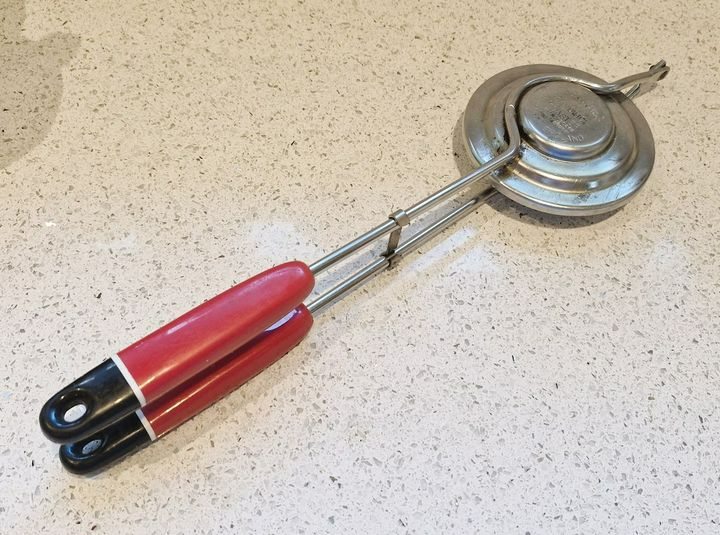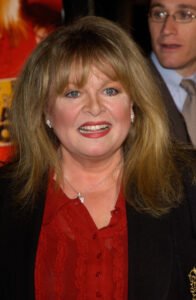
The Vintage Sandwich Toaster: History, Usage, and Legacy
A Brief History
The vintage sandwich toaster, also known as a pie iron or jaffle iron, has an intriguing history that dates back to the early 20th century. The first known patents for these devices appeared in the United States and Australia in the 1920s and 1930s. Originally designed for camping, these cast iron devices allowed users to cook hot, sealed sandwiches over an open fire. By the mid-20th century, electric sandwich toasters became popular household appliances, bringing the convenience of toasted sandwiches indoors.
Usage: A Culinary Revolution
The primary function of a vintage sandwich toaster is to create hot, sealed sandwiches by pressing and toasting bread with various fillings. The process is simple: place a buttered slice of bread on one side of the toaster, add fillings such as cheese, ham, or even fruit, and then cover with another buttered slice. Close the toaster, clamp it shut, and cook over a heat source or plug in the electric version.
In camping settings, the cast iron pie irons were placed directly into the fire or on a camp stove, making them versatile for outdoor cooking. As electric models gained popularity, they brought the same versatility into home kitchens. These appliances allowed for a quick, convenient way to prepare meals, making them a favorite among busy families.
Legacy: More Than Just a Kitchen Gadget
The vintage sandwich toaster holds a special place in culinary history. It represents a time when kitchen gadgets began to prioritize convenience and efficiency. In the post-war era, as families sought quicker meal solutions, the sandwich toaster became a symbol of modern domestic life.
Collectors and nostalgia enthusiasts often seek out vintage models, appreciating their durability and retro charm. These devices evoke memories of childhood for many, recalling simple yet satisfying meals made with care.
Modern Influence and Resurgence
Today, the legacy of the vintage sandwich toaster lives on. While modern versions have evolved with non-stick coatings and more sophisticated designs, the core concept remains the same. The resurgence of interest in retro and vintage kitchenware has also revived the popularity of these classic appliances.
In a world where convenience foods are often processed and less wholesome, the sandwich toaster offers a return to simple, homemade meals. It encourages creativity in the kitchen, allowing users to experiment with different ingredients and flavors. Moreover, it fosters a sense of nostalgia, connecting us to the culinary traditions of past generations.
Conclusion
The vintage sandwich toaster is more than just a kitchen gadget; it’s a piece of history that highlights the evolution of home cooking. From its origins in outdoor camping to becoming a household staple, it has remained a beloved tool for creating quick, delicious meals. Its legacy continues as modern iterations and a renewed appreciation for vintage kitchenware keep the spirit of the sandwich toaster alive. Whether used for a classic cheese toastie or an innovative new recipe, this humble appliance endures as a symbol of culinary simplicity and ingenuity.
This ’70s Blonde Bombshell Still Stuns Audiences Today – You Won’t Believe How
*All In The Family* was one of the greatest shows ever, and I believe its lessons are still relevant today. It made several actors famous – and Sally Struthers was one of them.
Today, the beautiful woman with her iconic blonde hair looks quite different – but she’s still working in the industry…

**A Precocious Talent**
For many of us, Sally Struthers will always be remembered for her role as Gloria Stivic in the ’70s sitcom *All In The Family*. The iconic show was about a working-class white family living in Queens, New York, and it received an incredible 73 award nominations and won 42 times during its run.
However, I wonder if people born after the show ended can really understand how groundbreaking it was. There had been funny sitcoms before, but they rarely addressed social issues and taboos. *All In The Family* took many of these topics and made them funny, heartbreaking, or sometimes both.
Watching old episodes of the show on YouTube really makes you feel young again. It makes you laugh and helps you forget about today’s problems. Many of the issues back then are still the same ones we face today, just presented in a comical way.
The main characters in *All In The Family* are Archie Bunker (Carroll O’Connor), Edith Bunker (Jean Stapleton), Gloria Bunker-Stivic (Sally Struthers), Michael Stivic (Rob Reiner), and Stephanie Mills (Danielle Brisebois). They all had great chemistry together.
In my opinion, Sally Struthers was very talented and often underrated as an actress. She even sang in some episodes of *All In The Family*, and I could see how she grew as a performer throughout the series.
“At first, I behaved like an idiot on the set. I thought that was how to get people to like me. I’ve learned to be myself, and now they respect me,” she told *Longview Daily News* in 1973.

When the series premiered in January 1971, Sally was a 22-year-old unknown with little TV experience. Producer Norman Lear, who Sally called the “father of us all,” discovered her while she was dancing on *The Smothers Brothers Comedy Hour*.
Despite her lack of experience, Sally did a fantastic job, just like the rest of the cast. Six months after the premiere, she was a certified star as *All In The Family* became the No. 1 show on television.
At the peak of her fame, she could hardly walk outside or go to dinner without being swarmed by fans. For an innocent 22-year-old, it was a very challenging experience.

During the first seasons of the show, Sally was happy playing Gloria Stivic. However, she was rarely given a chance to fully develop her character or showcase her acting skills. During a break from *All In The Family*, she told producers that she wanted to try a more dramatic role.
“When we go on hiatus, I want to do something different,” she said.
“There are so many ways to represent a woman. I would like to play a murderess, an unwed mother, a nun, and an old Jewish mother. At the end of my career, I’d like people to say that I am as funny as Judy Holliday and as respected as Ruth Gordon.”
Unfortunately, typecasting can hurt a career – how often do we see someone become famous from an iconic show, only to struggle afterward?
Sadly, that was somewhat true for Sally.
She won two Emmy Awards for her role as Gloria and was given leading parts in a few other shows after leaving *All In The Family*. But the reality was that she didn’t receive many offers, and work soon began to slow down for her.

In the 1990s, Sally was a semi-regular panelist on the game show *Match Game*. Others might recognize her as Babette Dell in *Gilmore Girls*.
Today, she has been a regular at the Ogunquit Playhouse since the early 2000s. This regional theater is located in Ogunquit, Maine, and produces four or more shows each season.
In 2022, she starred alongside AJ Holmes as Frau Blucher in Mel Brooks’ *Young Frankenstein* at La Mirada Theatre for the Performing Arts.
The *All In The Family* star has also worked hard to advocate for impoverished children in developing countries. Sally has been a spokesperson for the Christian Children’s Fund for many years and has appeared in their well-known TV commercials.
**Sally Struthers’ Daughter**
Many might not know this, but Sally is a mother of one, even though she never really wanted a child at first. After meeting famous psychiatrist William C. Rader, she changed her mind. The couple married in 1977, and two years later, they welcomed a daughter named Samantha.
Over the years, Sally has had her ups and downs. She lost her mother to Alzheimer’s in 1996; her mother passed away in Sally’s arms just two days before Christmas. Sally has also faced mean comments about her looks and weight over the years, mostly from random people on social media.
But the actress has handled all these challenges with charm, integrity, and a sense of humor.
“From the time I was able to walk and say a few words, my whole aim in life was to make people laugh,” she told *Spectrum News* in 2022.
“And when I hear other people laugh, and I know that some silly face I’ve made or some line reading has made them double over, I’m transported to heaven. That’s my thing. Laughter.”



Leave a Reply